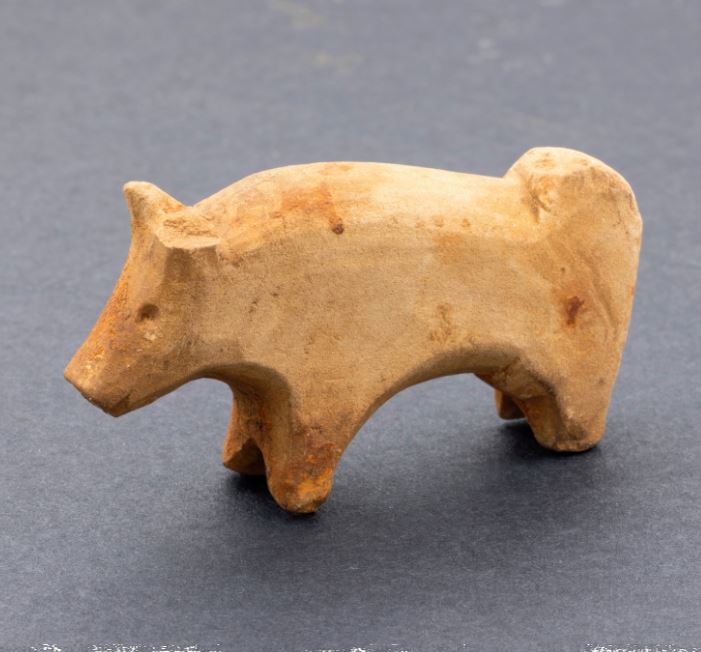This summer marks the fifth and final season of archaeological excavations at the historic settlement farm in Fjörður, Seyðisfjörður, located in eastern Iceland. The excavation, led by archaeologist Ragnheiður Traustadóttir, has unearthed between 700 and 800 artifacts, all dating from 940 to 1100 AD.
Among the findings, a small carved toy animal discovered on August 12th has sparked considerable debate (facebook page). While Ragnheiður believes it resembles a pig, others speculate it could be an Icelandic sheepdog, a bull, or even a bear. The toy animal is believed to date from the Viking Age, carved from stone, showcases the craftsmanship of the time, and has become a focal point of discussion among scholars and the public alike. The size is about 5cm in length and 2.7cm in height.
The excavation has revealed two overlapping longhouses, rich with artifacts that offer a glimpse into the lives of early Icelandic settlers. Among the most notable finds are 94 game pieces, possibly used for card games during long winter nights. Other significant discoveries include 60 spindle whorls, several glue-rock lamps, 140 beads, and 200 sharpening stones.
These findings will significantly enhance our understanding of material culture in early Iceland, with plans to display the artifacts in East Iceland and possibly at the National Museum.
The Excavation
Archaeological work at Seyðisfjörður, began in 2020 as part of a project to build protective walls against avalanches. Ragnheiður Traustadóttir led the initial digs and test trenches, which revealed medieval structures beneath the farm buildings in 2021. That same year, the team discovered four Viking-age burials. In 2022, the excavation uncovered a longhouse with a weaving room, animal houses, and a farm midden dating to the 11th–13th centuries.
The longhouse and other structures had been partially buried by a 10th-century landslide, leading to the swift abandonment of many items inside. This event has preserved the artifacts remarkably well, allowing the team to uncover a wealth of objects spanning 1,000 years of Icelandic history.
Viking Longhouses
Icelandic Viking longhouses, known as "langhús" in Icelandic, were the primary dwelling structures used by Norse settlers in Iceland during the Viking Age, roughly from the 9th to the 11th centuries. These longhouses are a significant part of Iceland's cultural heritage and provide valuable insights into the daily lives of early Icelandic settlers.
Longhouses were typically elongated, rectangular buildings, often ranging from 15 to 75 meters in length and about 5 to 6 meters wide. The size varied depending on the wealth and status of the household. The longhouses were constructed using locally available materials. The walls were made of turf, stone, or timber, and the roofs were often thatched with grass or turf, providing excellent insulation against Iceland's harsh weather. A defining feature of the longhouse was a central hearth running down the middle of the building. This hearth was used for heating, cooking, and light, making it the heart of the home. The longhouse was usually divided into different sections. The central hall was the main living area, where the family would eat, sleep, and socialize. Other sections of the longhouse might include storage areas, animal stalls (in wealthier households), and sometimes a separate room for weaving or other crafts.
Seyðisfjörður
Seyðisfjörður, a town in eastern Iceland with a population of 648, traces its roots back to the earliest settlements in the country. The area’s history is rich, from its founding by Norwegian fishermen in 1848 to its role in global telecommunications and as a base for Allied forces during World War II. The town is also home to some of Iceland’s first modern infrastructure, including the country’s first high-voltage AC power plant and street lighting.
3D model of the toy artifact:


